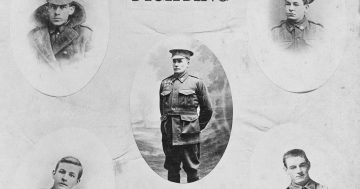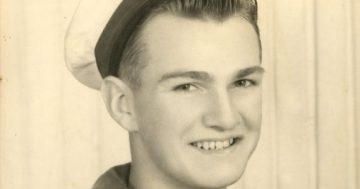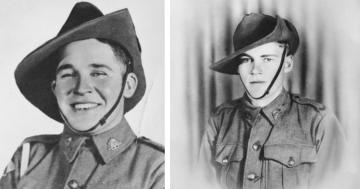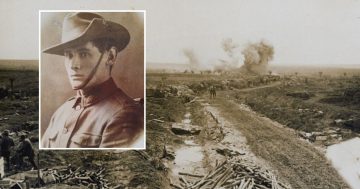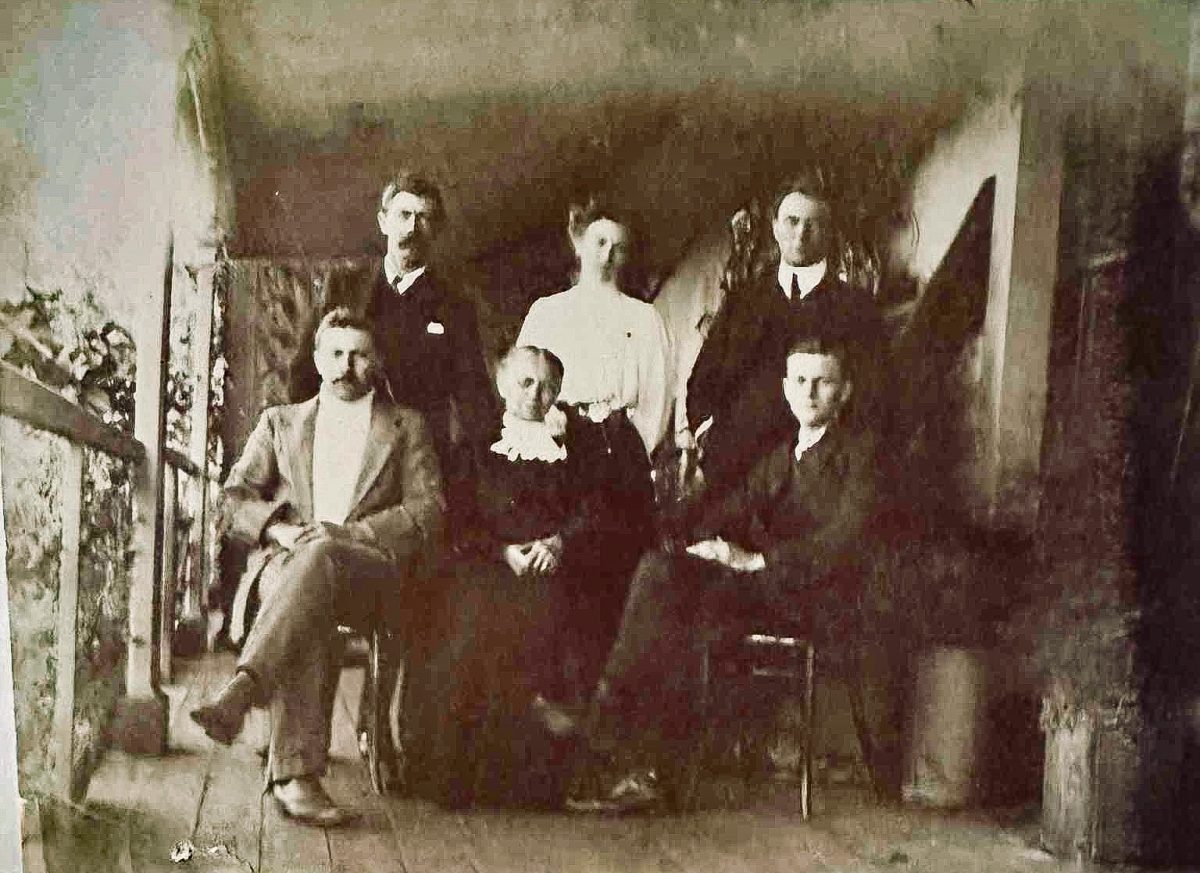
The Caldwell family with their mother at “Cairn Hill”, Thuddungra before two were lost to the First World War. Front, left to right: Afton, Mary and Andrew. Back, left to right: George, Susie and Logan. Photo: Kelly Slater.
Today (7 November), the Australian War Memorial will hold a Last Post Ceremony to honour brothers Andrew and Afton Caldwell, two young men from the Young district who left their family’s farms to fight in the First World War and never returned.
Andrew and Afton were sons of Steele and Mary Caldwell, part of a pioneering local family connected to various pastoral holdings west of Young including “Eurabba” and “Moonbucca” on The Bland, near Bimbi, and “Cairn Hill” at Thuddungra.
When Britain declared war on Germany in August 1914, Australia – as part of the British Empire – was automatically drawn into the conflict.
For families like the Caldwells, the distant war exacted a heavy toll, deepened by further tragedy at home, which saw five members of the family lost in just 11 months.
Among them were three who took up the call to serve: Andrew and Afton, and their half-nephew Anthony.
Recording his occupation as an accounts clerk, Andrew Sloane Caldwell, 24, already an established member of a local rifle club and militia unit, enlisted in the AIF on 25 September 1915.
The following year – in July 1916 – Anthony departed for England, intent on joining the Royal Flying Corps.
In October 1916 – 30-year-old farmer Afton Caldwell – also enlisted, having already served overseas, prior to 1910, in his father’s home country of Scotland with the 1st Volunteer Battalion, Royal Scots Fusiliers.
Andrew was the first of the Caldwell men to reach the front, joining the 20th Infantry Battalion in France in September 1916.
By March 1917, he was serving as a bulletin corporal in the recently liberated town of Bapaume on the Somme, when on the night of 25 March a time-delay mine hidden in the town hall exploded, killing 24 people.
Andrew was among six Australian soldiers who died, along with two French parliamentarians.
His body was later recovered and buried at Bapaume Communal Cemetery, and among the personal effects returned home were a wallet, Bible, knife, photographs – and a small boomerang.
His younger brother, Sapper Afton Caldwell, having received an engineering degree from the University of Edinburgh, had joined the AIF Engineers.
On 21 October 1917 Afton was digging ditches just outside the town of Ypres when a shell exploded near his diggings.
He sustained wounds to his shoulder and was transferred to the Canadian Clearing Station but died the following day and is buried in the Lijssenthoek Military Cemetery, Belgium.
Among his many personal effects were military books, two purses, cards, letters, a compass, tobacco pouch, pipe, knife, photos, negatives and films and a silver watch with a protective strap.
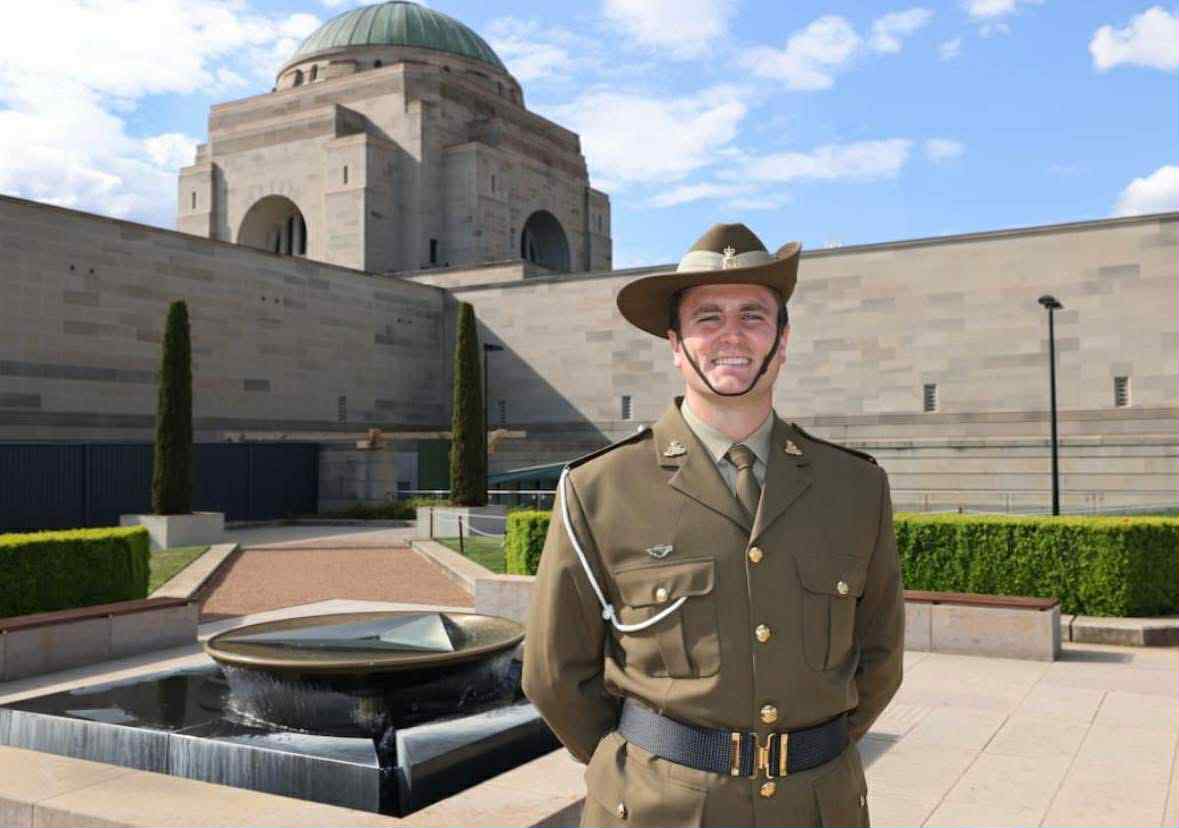
Great-great-great nephew of Afton and Andrew Caldwell, Australian Army Reservist Daniel Slater will participate in the 7 November Last Post ceremony at the Australian War Memorial. Photo: Kelly Slater.
Both brothers are remembered on the bronze panels of the Australian War Memorial, their names read aloud each year in ceremonies that connect past and present.
During today’s Last Post Ceremony in the Australian War Memorial’s Commemorative Courtyard at 4:30 pm, the stories of Afton and Andrew will be read aloud, accompanied by the sounding of the Last Post and a period of silence.
Their great-great-great-nephew Daniel Slater – an active member of the Australian Army Reserve – will read tributes and recite the Ode of Remembrance.
For the descendants of Steele Caldwell, the ceremony is an acknowledgement of sacrifice, service and the enduring impact of war on small rural communities.
Part of that will be remembering the third Caldwell lost to war.
Because he served in the Royal Flying Corps and not in an Australian unit, Anthony “Tony” Steele Caldwell does not appear in the AWM’s Roll of Honour, nor will he feature in Friday’s Last Post ceremony.
The son of Steele Caldwell Jr and grandson of Steele Snr from his first marriage to Jane Murray, Tony, 24, due to his huge interest in aeronautics, which had involved extensive personal study, paid his own passage to London to join the Royal Flying Corps.
After enlisting he progressed through mechanics, aeronautics and a range of other related courses, on most occasions graduating first in his class.
On 4 May 1917, Second Lieutenant Caldwell was a passenger under instruction with pilot Lieutenant Cyril Harvey Trollope when, shortly after take-off from Doncaster, the plane suffered engine failure.
A sharp turn to return to the airfield caused the aircraft to stall and crash 150 metres to the ground.
Both men were pulled from the wreck but died shortly afterward at the infirmary.
Tony Caldwell is buried at the Hyde Park Cemetery at Doncaster in England and is listed in the Australian War Memorial’s Commemorative Book.
Sadly, his death came shortly after the death of his older brother Alan in a sawmill accident on the family property on 2 February 1917.
For the family matriarch, Mary Caldwell, the loss of four young men in a single year proved too much; she died in December 1917, before the family could travel to Europe to pay their respects in 1924.







